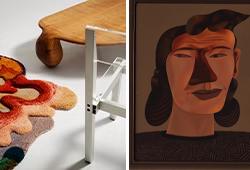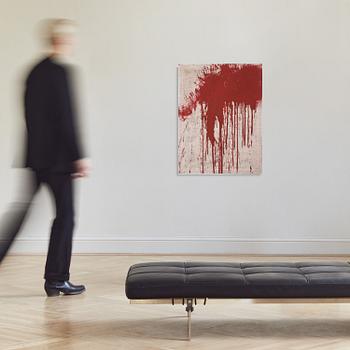Hermann Nitsch
"Schüttbild”
Signed Hermann Nitsch and dated 1983 on the stretcher verso. Oil on canvas 105 x 80 cm. The work is accompanied with a certificate of authenticity issued by The Nitsch Foundation.
Provenance
Galerie Biedermann, Munich.
Private Collection, Sweden. Acquired from the above in March 2001.
More information
Hermann Nitsch was an Austrian artist and one of the most prominent figures in the Viennese Actionism movement, an avant-garde artistic movement that emerged in Vienna in the 1960s and was active until the early 1970s. It became known for its often provocative performances and art actions that challenged conventional ideas about art, morality, and society. Nitsch's artistic work is characterized by a strong connection to rituals, symbolism, and physical actions, often in the form of performance art and abstract paintings. His works explore themes such as life, death, pain, and suffering, and he frequently used blood, meat, and other bodily materials in his works to provoke and explore these existential subjects.
"Schüttbild" from 1983 is one of Nitsch's so-called action paintings, marked by his unique and powerful style where paint is thrown, spilled, and smeared across the canvas. The term "Schüttbild" roughly translates to "throw painting" or "pouring painting," and the technique involves the artist pouring or throwing paint over the surface in a raw and impulsive manner, giving the painting an energetic and dynamic feel. Hermann Nitsch began developing his own form of action painting in the 1960s, in conjunction with his activity within Viennese Actionism. Action painting for Nitsch was an extension of his interest in ritual actions and physicality within art. Inspired by abstract expressionism, where the act of painting itself became central, Nitsch created his own version by physically throwing or pouring paint onto the canvas. For him, painting became a ritual and bodily act that was as significant as the final artwork itself.


















































